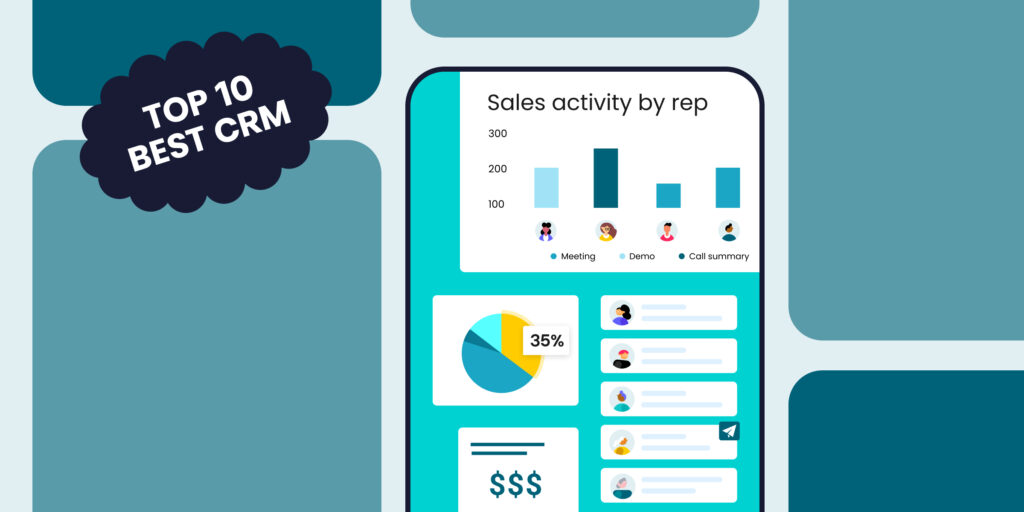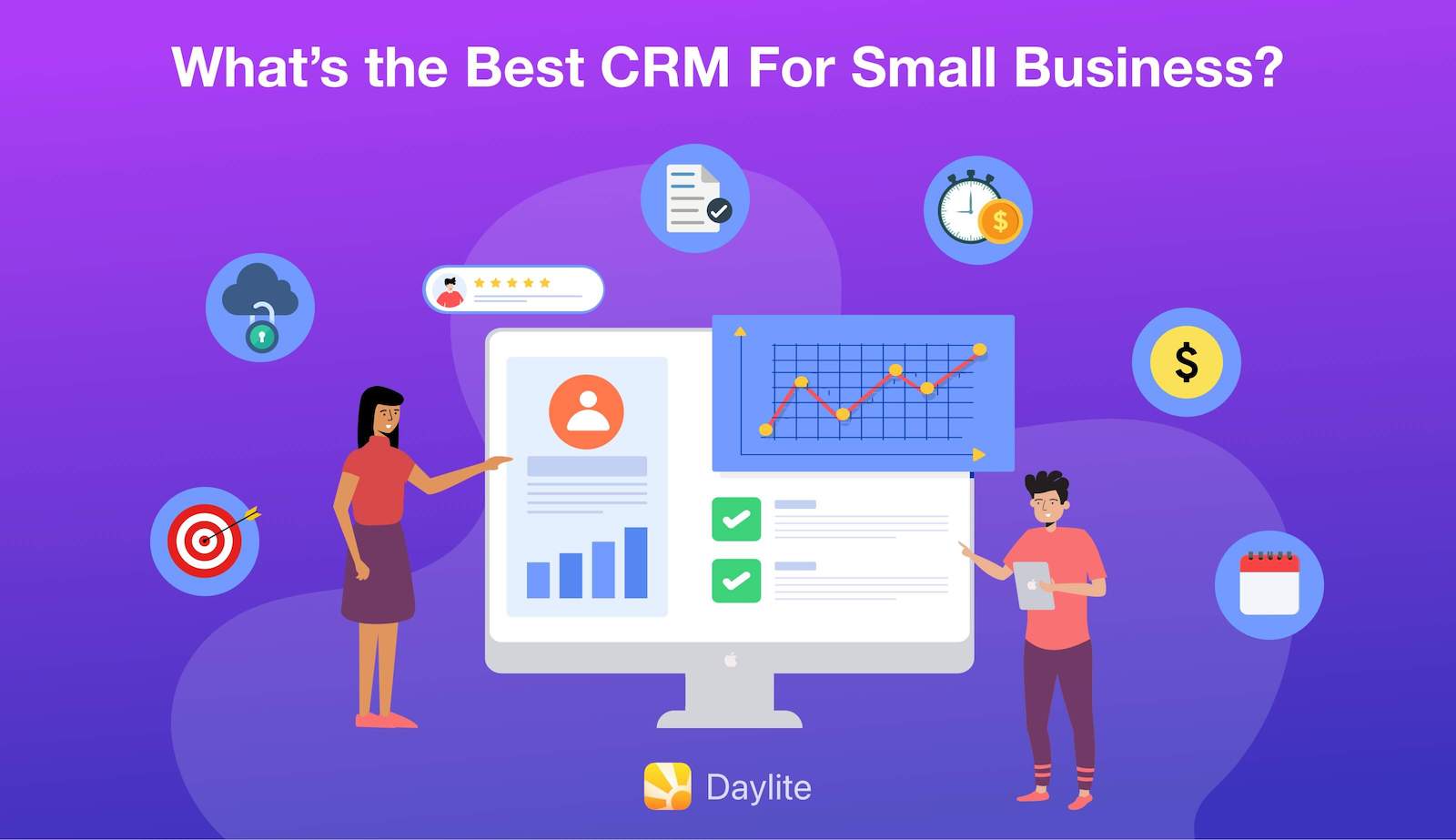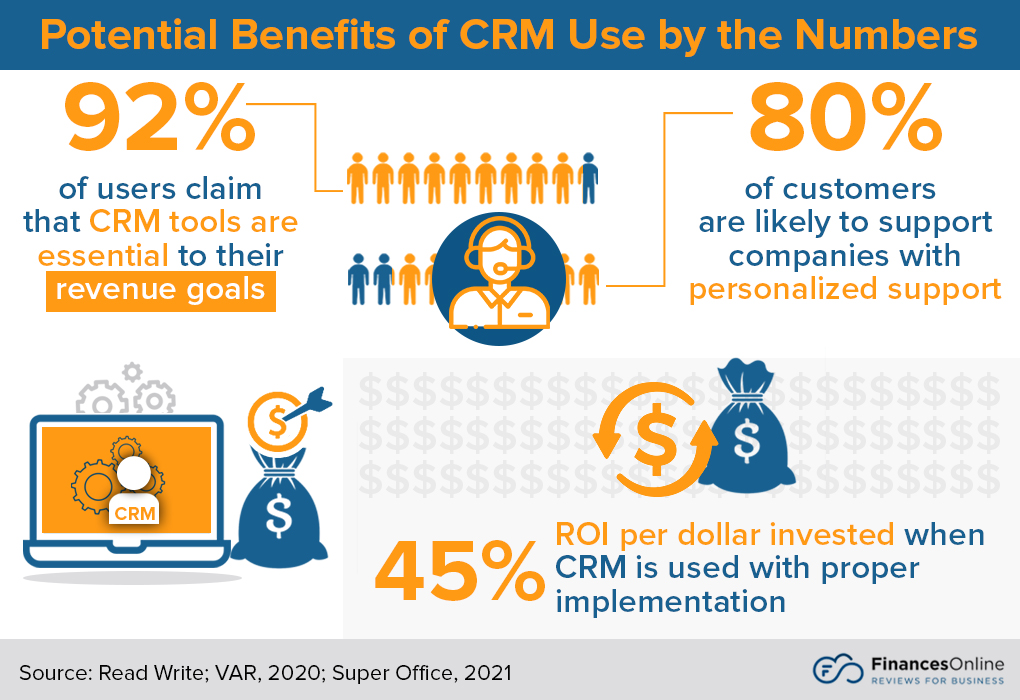
Running a small business is a whirlwind. You’re juggling a million things at once: marketing, sales, customer service, finances… the list goes on. In the midst of all this chaos, it’s easy for customer relationships to fall by the wayside. That’s where a Customer Relationship Management (CRM) system comes in. But with so many options available, choosing and implementing the right CRM can feel overwhelming. That’s why we’ve created this comprehensive small business CRM checklist for 2025. Consider this your roadmap to customer success, a guide to help you navigate the CRM landscape and build lasting relationships that fuel your growth.
Why You Need a CRM System in 2025
Before diving into the checklist, let’s quickly address the elephant in the room: Why does your small business even *need* a CRM? In 2025, the answer is more critical than ever. Here’s why:
- Customer Expectations are Higher: Customers expect personalized experiences, instant responses, and consistent interactions across all channels. A CRM empowers you to deliver.
- Data is King (and Queen): Data-driven decision-making is the norm. A CRM centralizes customer data, providing valuable insights into their behavior and preferences.
- Automation is Essential: Automating repetitive tasks frees up your team to focus on what matters most: building relationships and closing deals.
- Competition is Fierce: Businesses are vying for customer attention. A CRM gives you a competitive edge by streamlining your processes and improving customer satisfaction.
Phase 1: Planning and Assessment – Laying the Foundation
The first phase is all about preparation. Don’t jump into selecting a CRM without a clear understanding of your needs and goals. This phase sets the stage for a successful implementation.
1. Define Your Business Goals and Objectives
What do you want to achieve with a CRM? Increased sales? Improved customer retention? Enhanced marketing effectiveness? Be specific. Write down your goals and make them measurable. For example, instead of saying “improve customer service,” aim for “reduce average customer support ticket resolution time by 15% within six months.” These goals will guide your CRM selection and implementation.
2. Identify Your Target Audience and Customer Personas
Who are you selling to? Understand your ideal customer. Create detailed customer personas, outlining their demographics, behaviors, pain points, and goals. This will help you tailor your CRM strategy and personalize your interactions.
3. Analyze Your Current Processes
How do you currently manage customer interactions? Map out your existing sales, marketing, and customer service workflows. Identify inefficiencies, bottlenecks, and areas for improvement. This analysis will help you determine which CRM features are essential.
4. Assess Your Data and Data Sources
Where is your customer data currently stored? Spreadsheets? Email inboxes? Contact lists? Identify all your data sources and assess the quality of your data. Determine what data you need to migrate to your CRM and how you’ll handle data cleansing and standardization.
5. Determine Your Budget
CRM systems come in various price points. Set a realistic budget, considering software costs, implementation expenses, training, and ongoing maintenance. Factor in the return on investment (ROI) you expect to achieve.
6. Assemble Your CRM Team
Who will be involved in the CRM implementation and ongoing management? Assign roles and responsibilities. Consider including representatives from sales, marketing, customer service, and IT. Make sure someone is designated as the CRM administrator.
Phase 2: Selecting the Right CRM – Choosing the Perfect Fit
With your groundwork laid, it’s time to choose a CRM. This is a crucial decision, so take your time and carefully evaluate your options.
7. Research CRM Vendors and Solutions
Explore the market. Research different CRM vendors, such as HubSpot, Salesforce, Zoho CRM, Pipedrive, and Freshsales. Look at their features, pricing, integrations, and customer reviews. Consider industry-specific CRMs if applicable.
8. Define Your Must-Have Features
Based on your business goals and process analysis, create a list of essential CRM features. These might include contact management, lead management, sales pipeline management, email marketing integration, customer service ticketing, reporting and analytics, and mobile access.
9. Evaluate Ease of Use and User Experience
The CRM should be easy for your team to learn and use. Consider the user interface, navigation, and overall user experience. Look for a CRM that is intuitive and requires minimal training.
10. Assess Integration Capabilities
Your CRM should integrate with other tools you use, such as email marketing platforms, accounting software, and social media channels. Check for native integrations or the ability to integrate via APIs.
11. Consider Scalability and Future Growth
Choose a CRM that can grow with your business. Consider its capacity to handle increased data volume, user accounts, and feature demands as your business expands.
12. Evaluate Security and Data Privacy
Ensure the CRM offers robust security features to protect your customer data. Review their data privacy policies and compliance with relevant regulations, such as GDPR and CCPA.
13. Request Demos and Free Trials
Narrow down your choices and request demos from the top contenders. Take advantage of free trials to test the CRM’s features and see how it fits your workflow.
14. Compare Pricing and Licensing Models
Understand the pricing structure of each CRM, including subscription fees, per-user charges, and any additional costs. Compare the licensing models and choose the option that best suits your budget and needs.
15. Make Your Decision and Select a CRM
Based on your research, evaluation, and testing, make your final decision and select the CRM that best aligns with your business requirements.
Phase 3: Implementation and Training – Getting Started Right
Choosing a CRM is only the first step. Successful implementation is key to realizing its full potential.
16. Plan Your Implementation Strategy
Develop a detailed implementation plan, outlining the steps involved, timelines, and resources required. Consider a phased rollout to minimize disruption and allow for adjustments.
17. Data Migration and Cleansing
Migrate your existing customer data to the CRM. Cleanse and standardize your data to ensure accuracy and consistency. Address any data quality issues before importing.
18. Customize Your CRM
Tailor the CRM to your specific needs. Customize fields, workflows, reports, and dashboards to align with your business processes. Configure user roles and permissions.
19. Integrate with Other Tools
Connect your CRM with other tools you use, such as email marketing platforms, accounting software, and social media channels. This will streamline your workflows and provide a holistic view of your customers.
20. Train Your Team
Provide comprehensive training to your team on how to use the CRM. Offer different training sessions for different roles. Create training materials, such as user guides and videos.
21. Test and Refine
Thoroughly test the CRM after implementation. Identify and address any issues or bugs. Refine your configurations and workflows based on user feedback.
22. Go Live and Roll Out
Once you’re confident that the CRM is ready, go live and roll it out to your team. Provide ongoing support and encouragement.
Phase 4: Ongoing Management and Optimization – Making it Work for You
The CRM journey doesn’t end with implementation. Continuous management and optimization are essential for maximizing its value.
23. Monitor CRM Usage and Adoption
Track how your team is using the CRM. Identify any bottlenecks or areas where they need additional training or support. Encourage adoption and provide incentives.
24. Analyze Data and Generate Reports
Regularly analyze the data in your CRM to gain insights into your customer behavior, sales performance, and marketing effectiveness. Generate reports to track your progress towards your goals.
25. Review and Refine Your Processes
Periodically review your CRM processes and workflows. Identify areas for improvement and make adjustments as needed. Stay agile and adapt to changing customer needs.
26. Provide Ongoing Training and Support
Offer ongoing training and support to your team. Keep them updated on new features and best practices. Address any questions or concerns they may have.
27. Stay Updated with CRM Updates and New Features
Keep up with the latest CRM updates and new features. Regularly update your CRM to take advantage of the latest enhancements and security patches.
28. Seek Feedback and Iteration
Gather feedback from your team and customers on how the CRM is performing. Use this feedback to make improvements and iterate on your CRM strategy.
29. Measure ROI and Track Key Metrics
Measure the return on investment (ROI) of your CRM. Track key metrics, such as sales growth, customer retention, and customer satisfaction. Use these metrics to assess the CRM’s impact on your business.
30. Regularly Back Up Your Data
Implement a data backup strategy to protect your CRM data. Regularly back up your data to prevent data loss in case of a system failure or other unforeseen events.
Advanced Tips for CRM Success in 2025
Beyond the core checklist, here are some advanced tips to help you get the most out of your CRM in 2025:
- Embrace AI and Automation: Leverage AI-powered features, such as chatbots, lead scoring, and predictive analytics, to automate tasks and personalize customer interactions.
- Focus on Mobile Accessibility: Ensure your CRM is fully accessible on mobile devices, allowing your team to access and manage customer data on the go.
- Prioritize Data Security and Compliance: Stay up-to-date with the latest data security best practices and compliance regulations, such as GDPR and CCPA.
- Foster a Customer-Centric Culture: Make customer satisfaction the top priority across your entire organization. Use your CRM to empower your team to deliver exceptional customer experiences.
- Integrate with Emerging Technologies: Explore integrations with emerging technologies, such as augmented reality (AR) and virtual reality (VR), to enhance customer engagement.
- Personalize Everything: Leverage the data in your CRM to personalize every interaction, from email marketing campaigns to customer service interactions.
- Embrace Omnichannel Communication: Manage all customer interactions across multiple channels (email, phone, social media, live chat) from within your CRM.
- Use Analytics for Continuous Improvement: Regularly analyze your CRM data to identify areas for improvement and optimize your customer relationship strategies.
Conclusion: Your CRM Journey to Success
Implementing a CRM system is a significant investment, but the rewards are well worth it. By following this small business CRM checklist for 2025, you’ll be well-equipped to choose the right CRM, implement it successfully, and optimize it for maximum impact. Remember, a CRM is not just software; it’s a strategic tool that can transform your business. Embrace the power of customer relationships and watch your business thrive. The journey doesn’t end with implementation; it’s a continuous process of learning, adapting, and optimizing. By staying proactive, embracing new technologies, and always putting the customer first, you can build a thriving business that stands the test of time.


